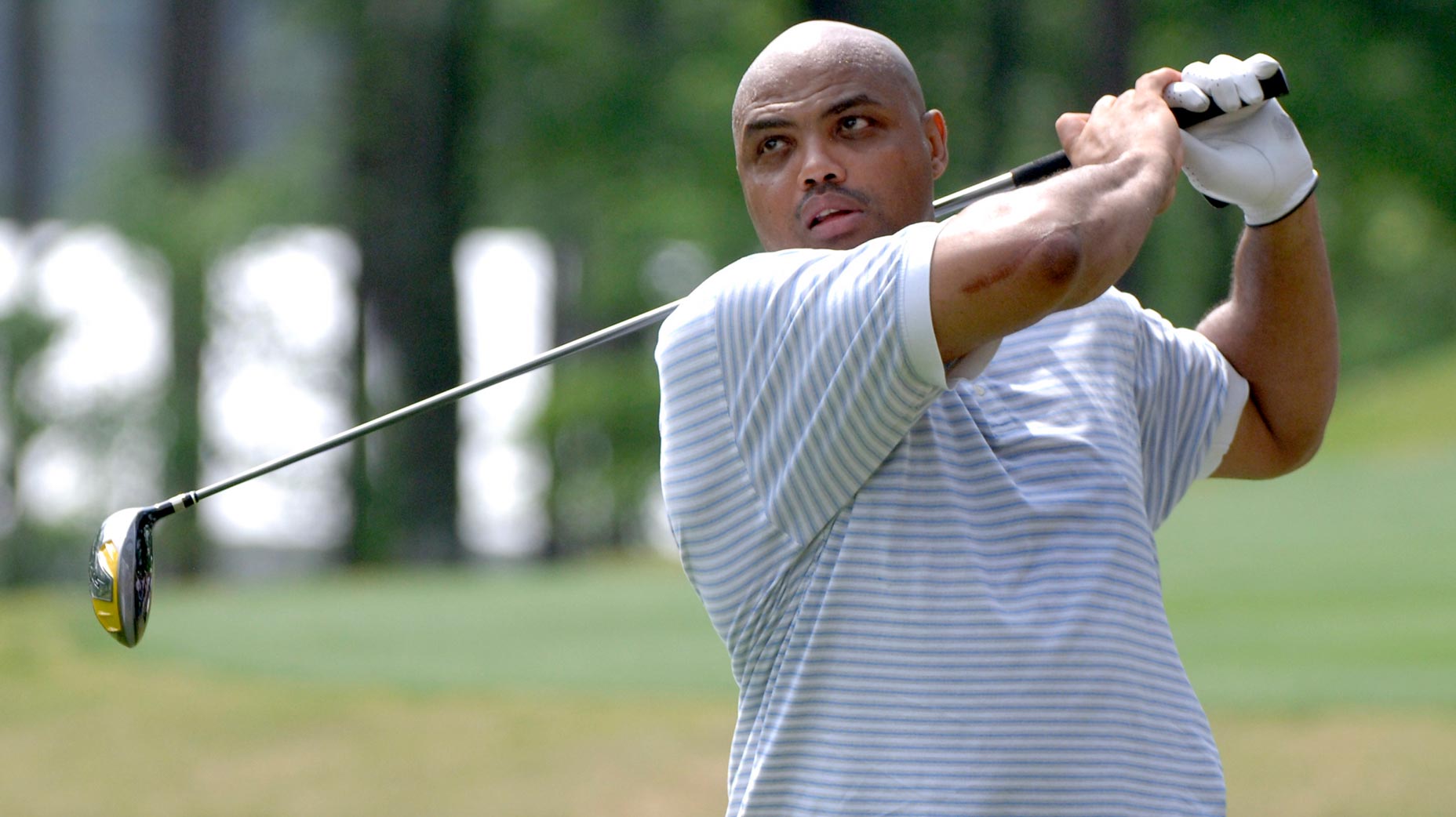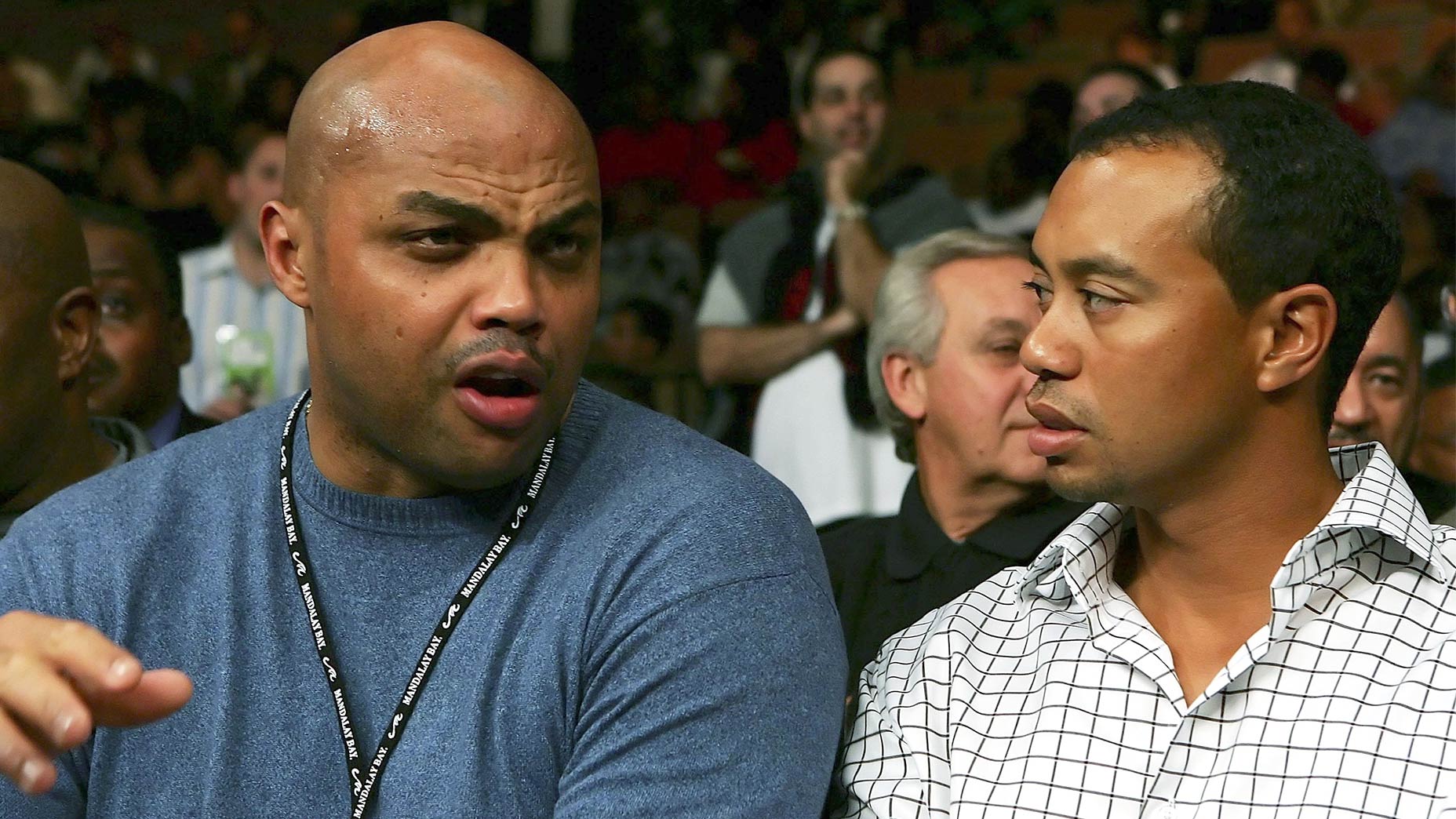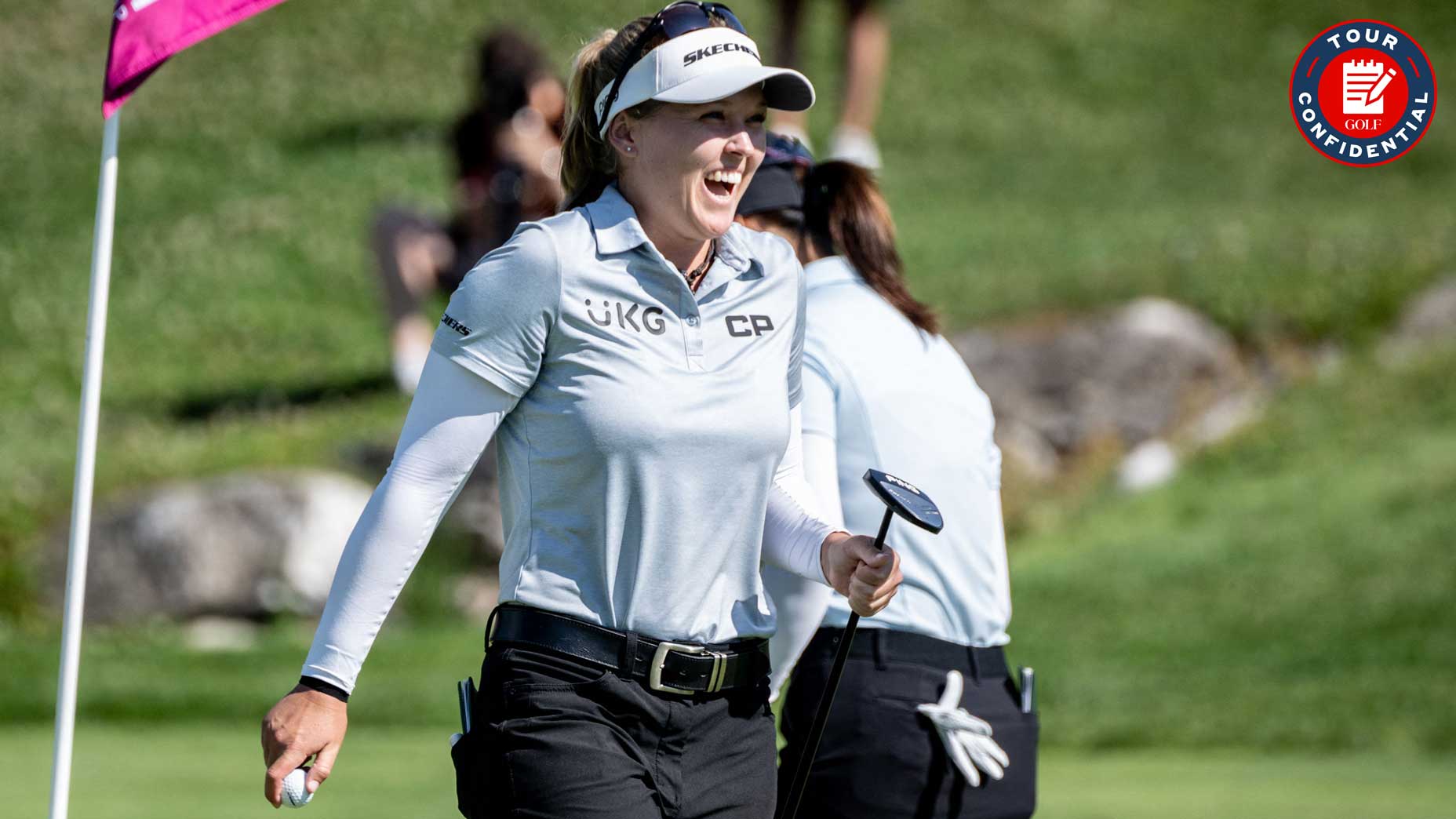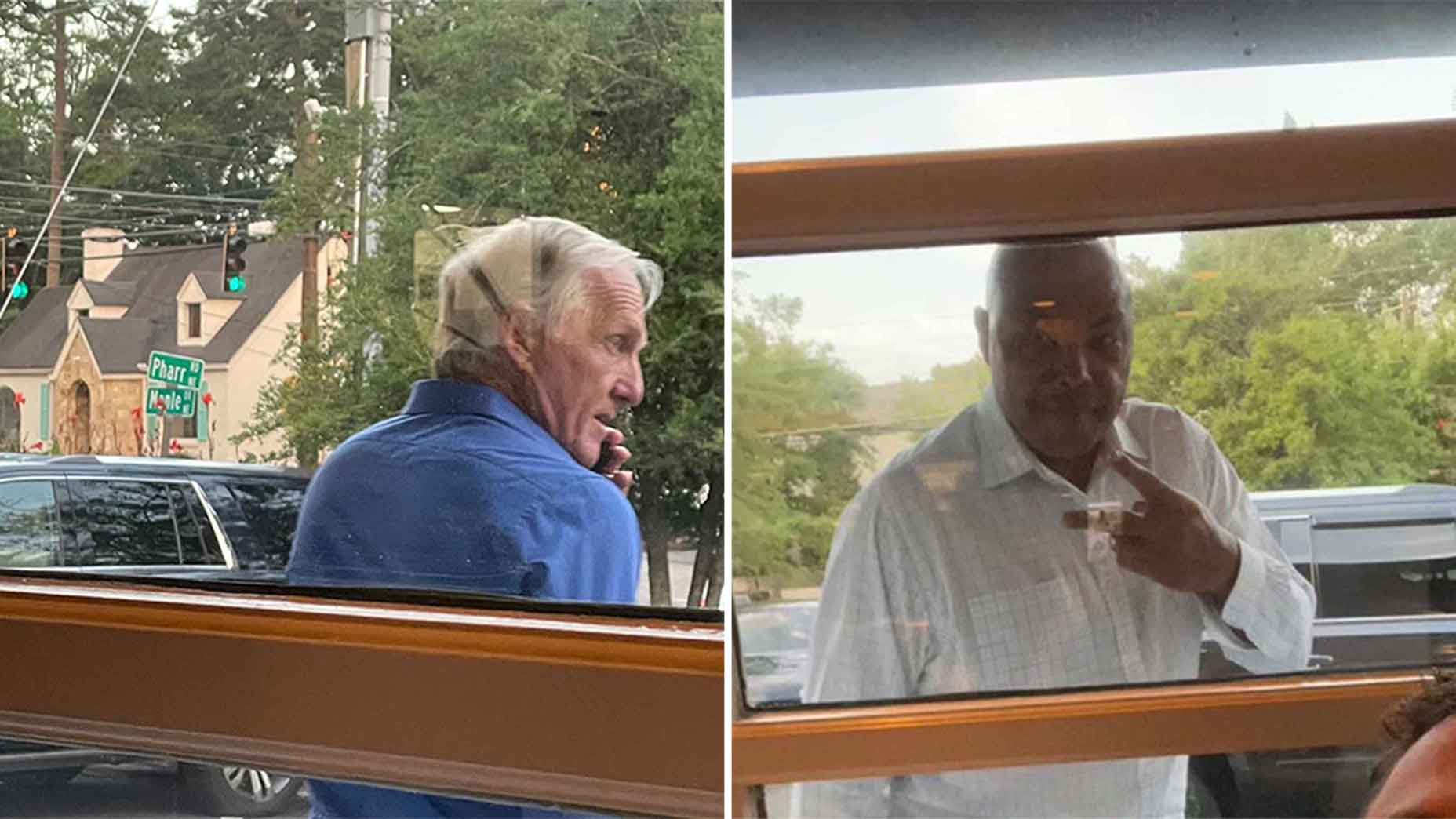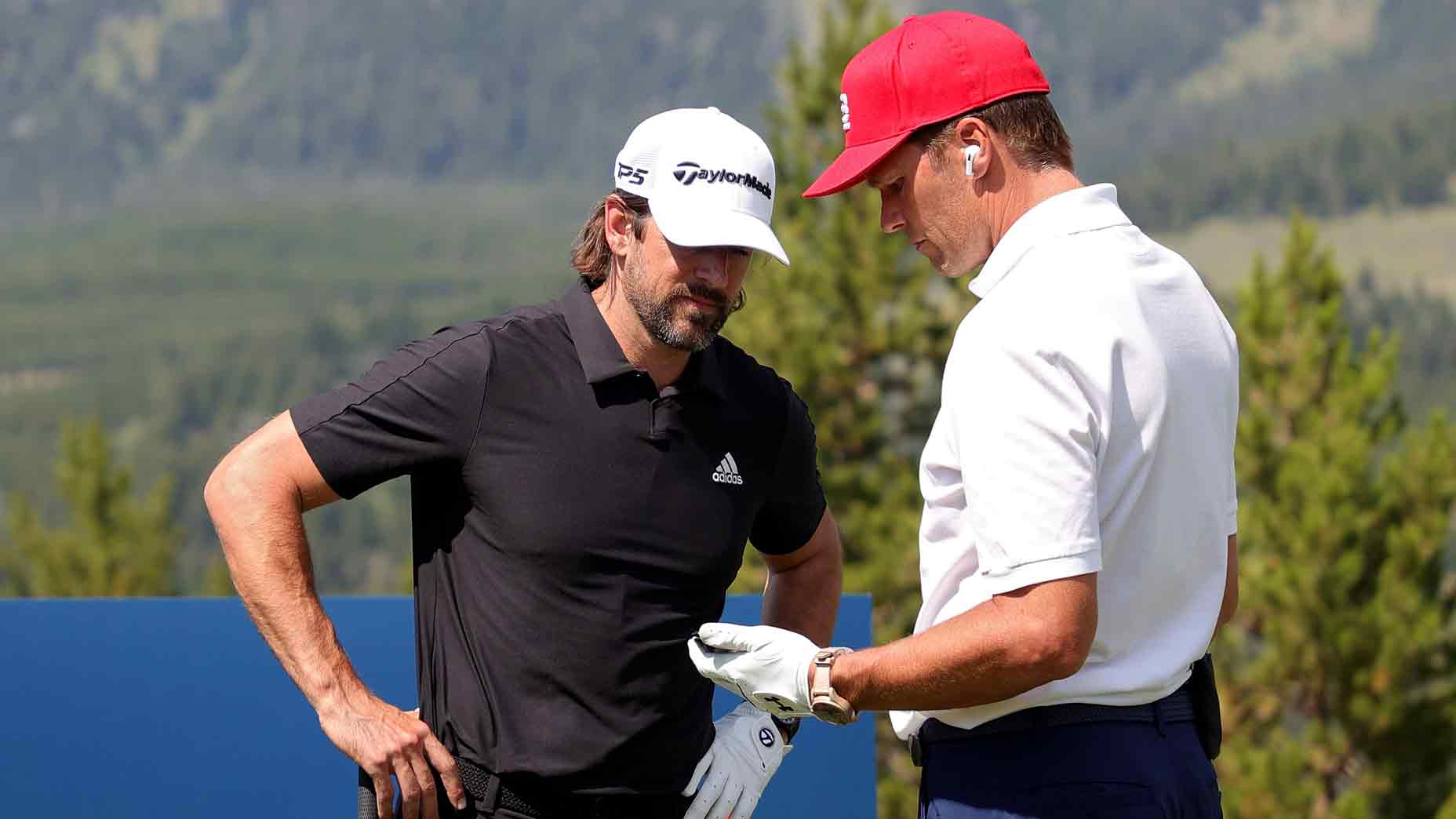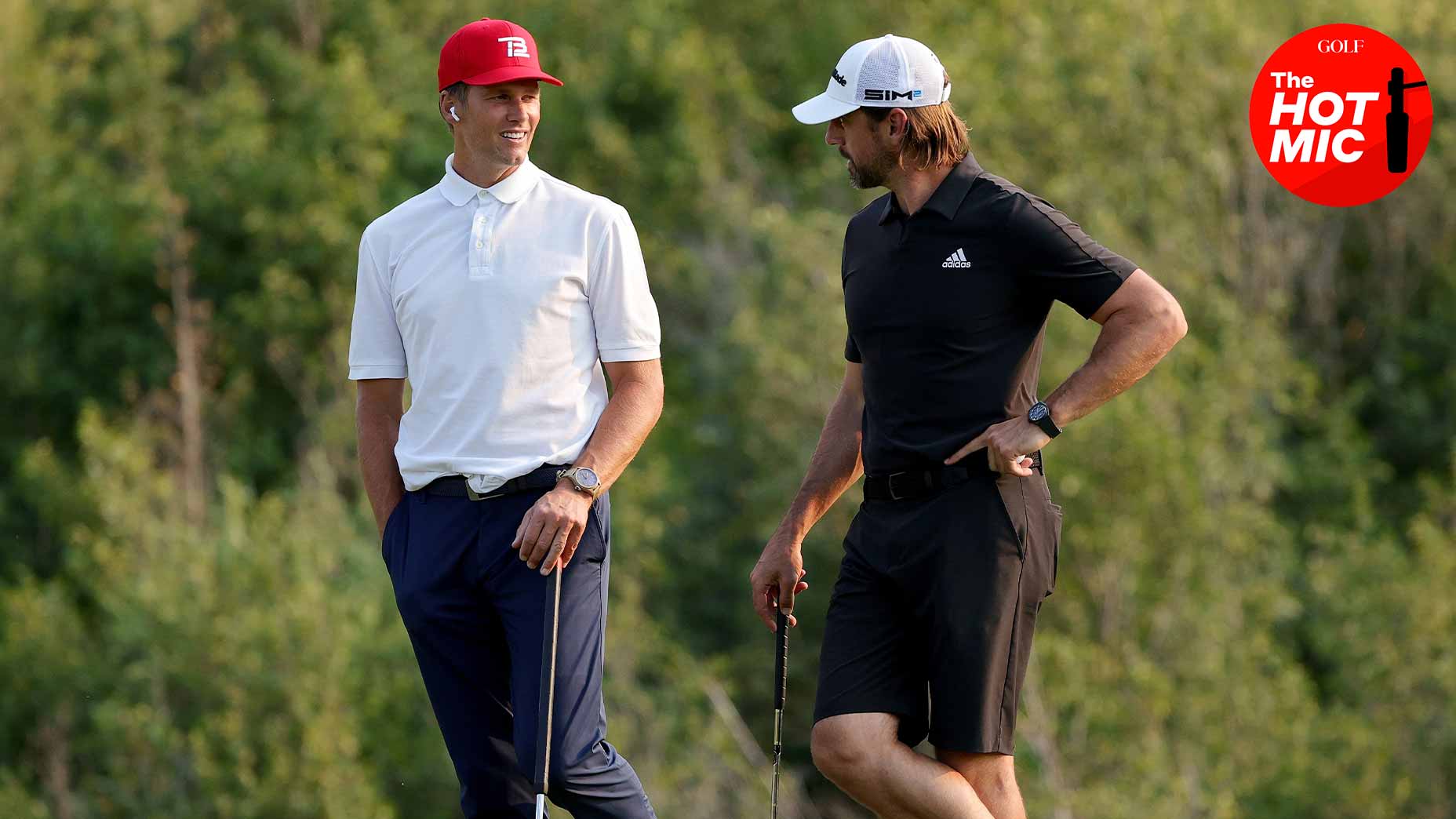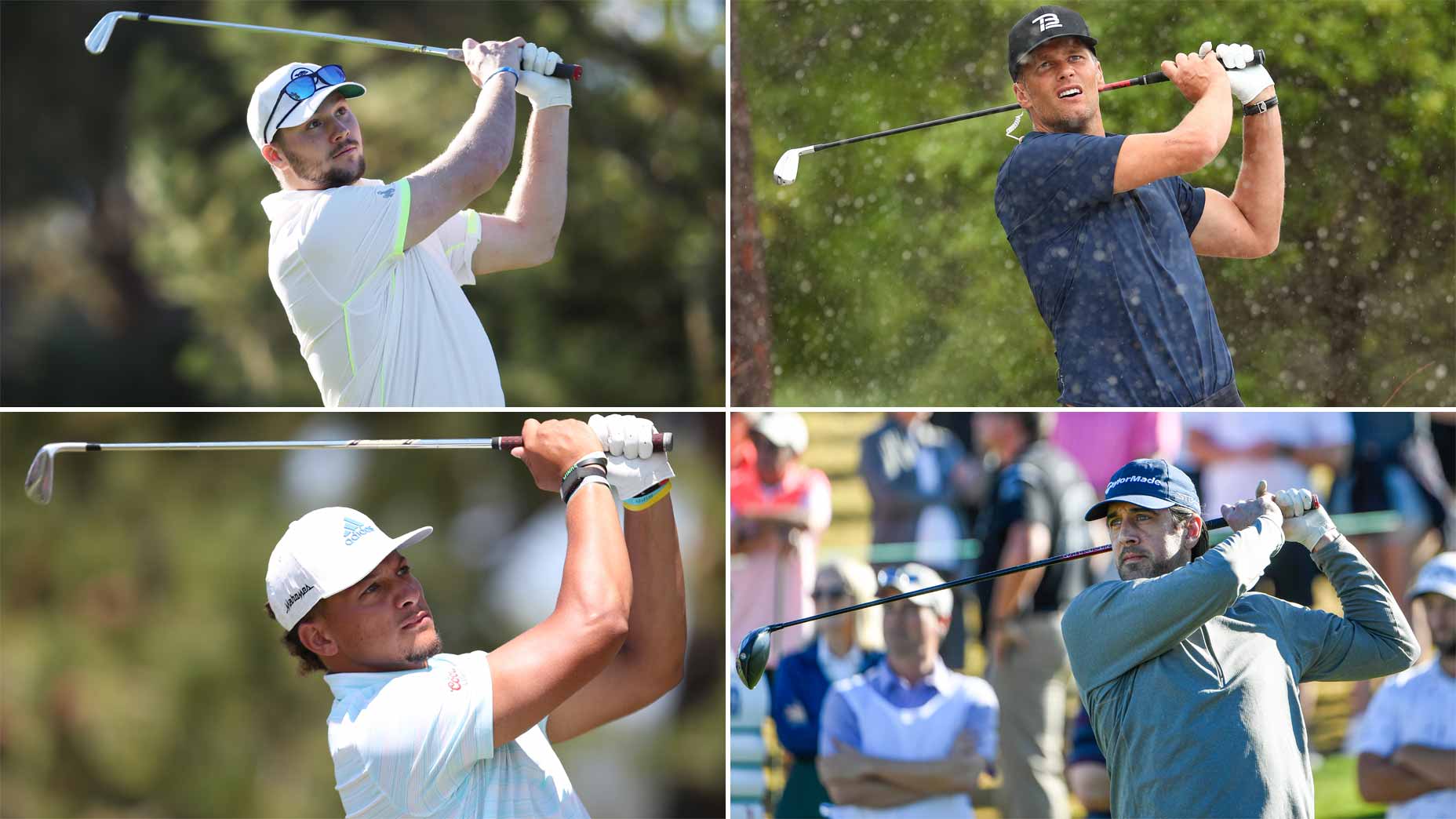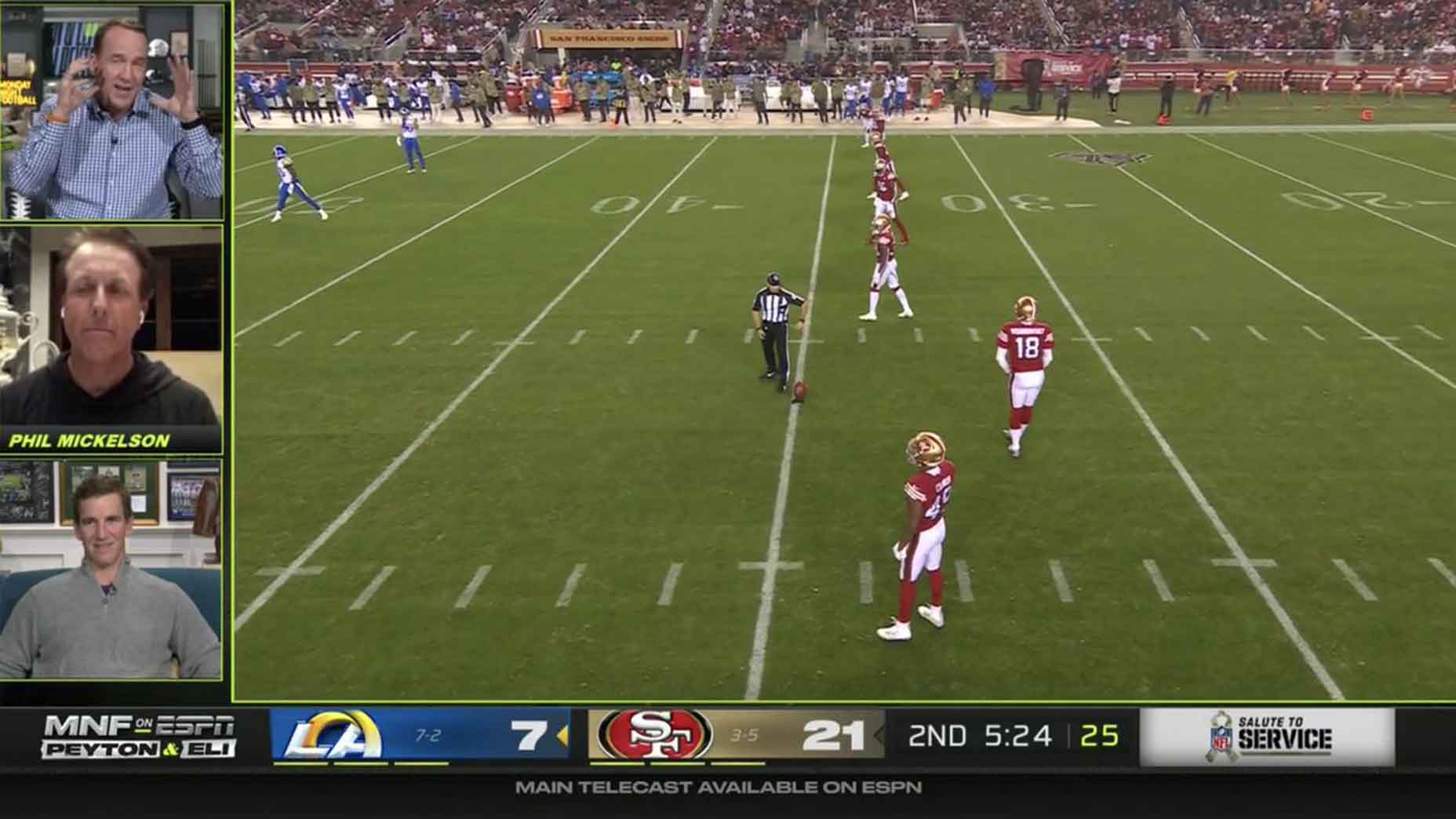‘It wasn’t for lack of trying’: An unauthorized history of Charles Barkley’s tortured golf swing
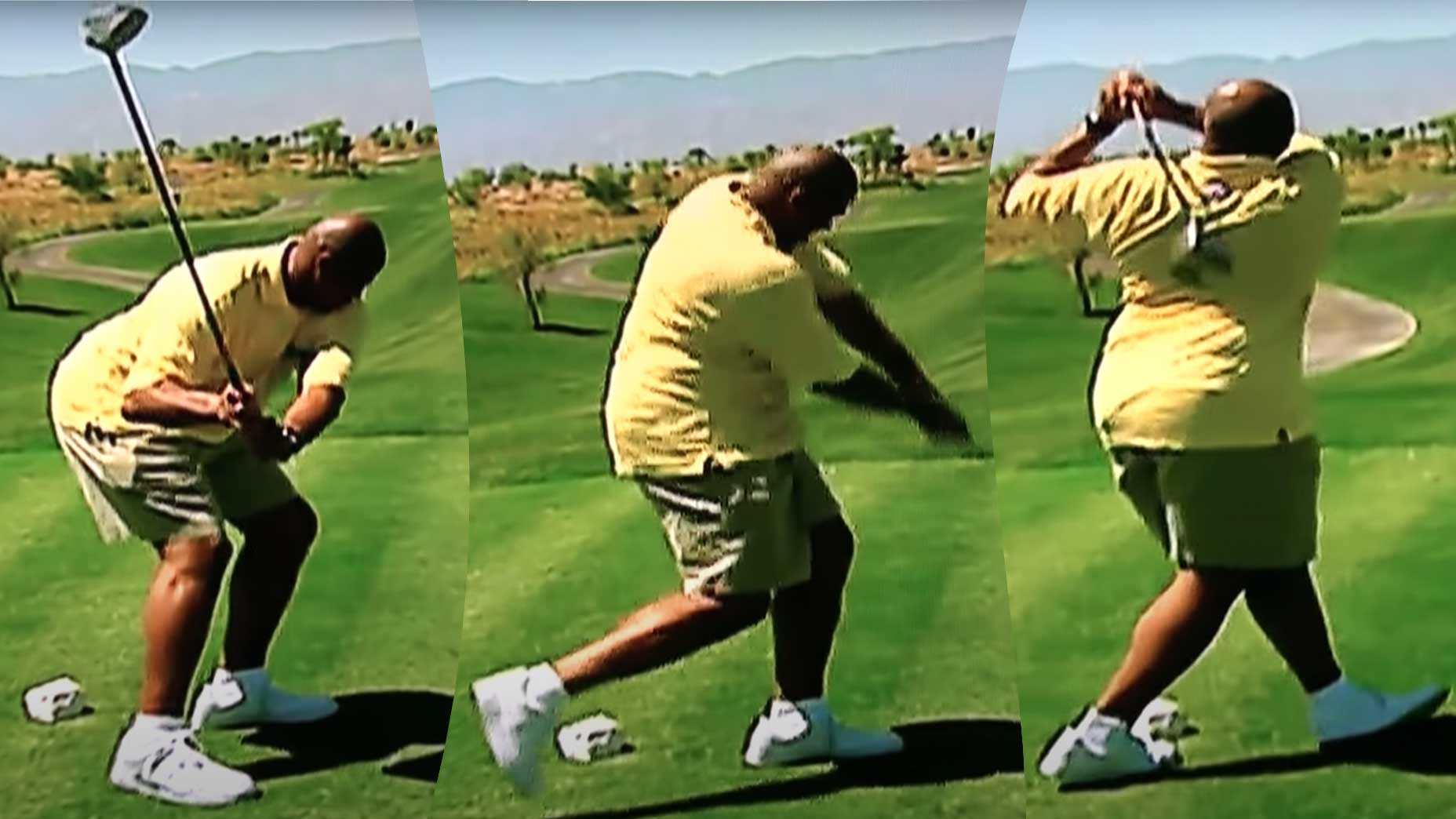
This 2011 video of Charles Barkley's swing has been viewed nearly 1.5 million times on YouTube.
YouTube
At 63, the former Arizona Cardinals wide receiver Roy Green has been around a while and seen lot of things, but if he looks back long and hard, through the misty rings of time, he can still make out a picture most people can’t imagine.
He remembers when Charles Barkley had a buttery swing.
It was the early 1990s, and Barkley had just moved from Philadelphia to Phoenix, in a deal that sent him from the Sixers to the Suns. Stars from different sports with a shared interest in golf, Barkley and Green became close friends and frequent playing partners.
“I’ve never met anyone who loves golf more than Chuck,” Green says. “If he had a week off, a day off, heck, if he had a few hours off, he’d want to be out there playing.” He played well, too, Green says, routinely breaking 80 with a blend of power and finesse that translated from the hard court to the course. In their regular outings, the two pals pegged it with a rotating cast of well-known desert dwellers that included the NBA-ers Dan Majerle and Vinny Del Negro, and the fleet-footed outfielder Vince Coleman. Among jocular jocks, shot-making mattered. Smack talking mattered more.
“You know how it is,” Green says. “The whole point of the day was to see how much you could abuse each other.”
Black Friday Gadget Deals
Shop NowAt Gainey Ranch Golf Club, one of Green and Barkley’s favorite Scottsdale-area courses, then director of golf Jim Murphy, who is now the club’s general manager, became part of the hit-and-giggle-at-the-other-guy gaggle.
Barkley, Murphy says, “was a solid all-around player,” with sound tempo, soft hands and a sharp tongue.
“He and Roy were as thick as thieves, always giving each other lip and just about the funniest people you could ever be around,” Murphy says. “It was basically free entertainment.”
One day before a round, Green and Murphy gave Barkley a desert-golf care package consisting of a compass, a canteen, sunscreen and snakebite serum: a gag gift that seems in retrospect like a grim omen.
“We all got a good laugh out of it,” Murphy says. “Little did we know.”
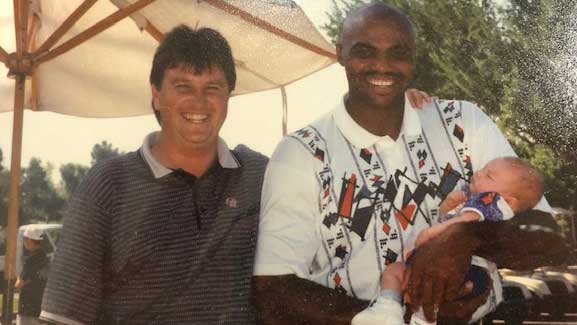
On Friday, when Barkley takes the tee alongside Phil Mickelson, Steph Curry and Peyton Manning in the latest edition of Capital One’s The Match, a televised charitable event at Stone Canyon Golf Club, in Oro Valley, Ariz., he will do so as the world’s most famously bad golfer, notorious for the hitch — make that, hitches — in his swing. Never mind recent reports that Barkley has, at long last, overcome his hiccups and no longer deserves his hapless reputation. That verdict won’t be final until the lights go on.
For now, the more interesting question is how he got from there to here.
“I’ll tell you one thing,” Green says. “It wasn’t for lack of trying.”
In the public disaster that is Barkley’s game, there is no definitive black box recording — no single piece of evidence that indicates exactly when all things went to hell.
What there is instead is constant chatter, much of it echoing in Barkley’s head.
“My brain’s got so many voices in it,” Barkley acknowledged earlier this year on GOLF’s Subpar podcast with Colt Knost and Drew Stoltz.
In his own telling, Barkley’s woes began when he moved to Phoenix, and found that every functioning adult, from the barber to the banker, was either a Tour pro or a Tour pro-wannabe. He felt pressure to improve.
“I started taking lessons from every Tom, Dick and Harry,” Barkley told the Subpar hosts.
Formal instruction, though, was only one of Barkley’s problems. As Green sees it, a deeper issue lay in his buddy’s psyche, a mix of obstinacy and open-mindedness that got him seeking insights from random passersby but preventing him from recognizing when to stop.
“He’s the kind of guy who goes to the grocery store, and on the way out, he’s asking the butcher for a swing tip,” Green says. “We tried to warn him. But Chuck’s so hardheaded. He would hit it 300 down the middle and knock it to four feet for birdie on the 1st hole, and on the next tee he’d be asking what he should change next.”
In Green’s recollection, a dark turn in the plot came about two decades ago, when he and Barkley visited San Diego for a Nike-sponsored event, one of those corporate shindigs built on fancy late-night dinners and long days on the links. Crossing paths with a golf pro, Barkley, inevitably, asked for input.
“This pro got Chuck to make a slight pause at the top,” Green says. “And the next couple of rounds, man, he was smoking it. He was playing the best golf I’d ever seen from him, shooting 75, 76. We all said, ‘You got it, Chucky! This is it.’”
Until the pause became a stall, which morphed into a stutter.
“It was all downhill from there,” Green says.
The rough timeline Green traces squares with the historical record at the American Century Championship, the celebrity event at Edgewood, in Lake Tahoe, that Barkley has been playing in since 1993. In his first Tahoe appearance, Barkley posted rounds of 84, 89 and 91, respectable scores that he mostly kept up until 1999, when those numbers ballooned into the triple digits and stayed that way. In 2003, the tournament switched to a modified Stableford system, a mercy rule, of sorts, implemented largely for Barkley’s sake.
Not that it mattered. No amount of statistical camouflage could hide what had become golf’s greatest tragicomedy, heartbreaking but hilarious, as difficult to watch as it was to look away. Over the years, Barkley has heard it all — friendly heckling, hostile hazing — weathering the comments with apparent good humor while redoubling his efforts to get well again. He has sought out an apothecary’s worth of cures, from the Hank Haney Project to hypnotism, and pretty much everything in between.
Perhaps the most frustrating part — puzzling to non-golfers but perfectly relatable to anyone who plays — is that Barkley can pure it on the range; his swing only palsies when he’s in performance mode.
Chris Detsch, a Nevada pro who has caddied for Barkley in Tahoe for the past 14 years, says that he and his boss have tried a range of tricks to overcome the mental block—left-handed, cross-handed, one-handed, eyes closed — with varying degrees of success. One year, Detsch taped two of his own business cards inside Barkley’s sunglasses and had him play some shots, like a thoroughbred with blinders.
“He knows that it’s not about changing the mechanics,” Detsch says. “It’s mental. He’s working hard at it, and he’s making progress. He just needs to swing and let the ball get in the way.”
Among swing gurus and armchair shrinks alike, the yips have been compared to post-traumatic stress disorder. The parallel might apply in Barkley’s case. Some years ago, Detsch says he learned from a member of Barkley’s inner circle, Barkley was playing in a non-Tahoe pro-am when he struck a boy in the gallery with an errant shot. Though the kid wasn’t seriously injured, the incident reportedly rattled Barkley, whose troubles pulling the trigger only worsened. Considered in that light, it’s likely no coincidence that the fan-less 2020 version of the Tahoe event marked Barkley’s strongest showing in the tournament in years.
Or maybe it’s simply the Stan Utley effect. Recent word from Camp Barkley is that the big man may have finally exorcised his demons. Barkley himself says he’s made great strides, and that he owes his progress to working with Utley, the well-known Scottsdale-area instructor who has taught the likes of Sergio Garcia, Kevin Streelman and Jay Haas.
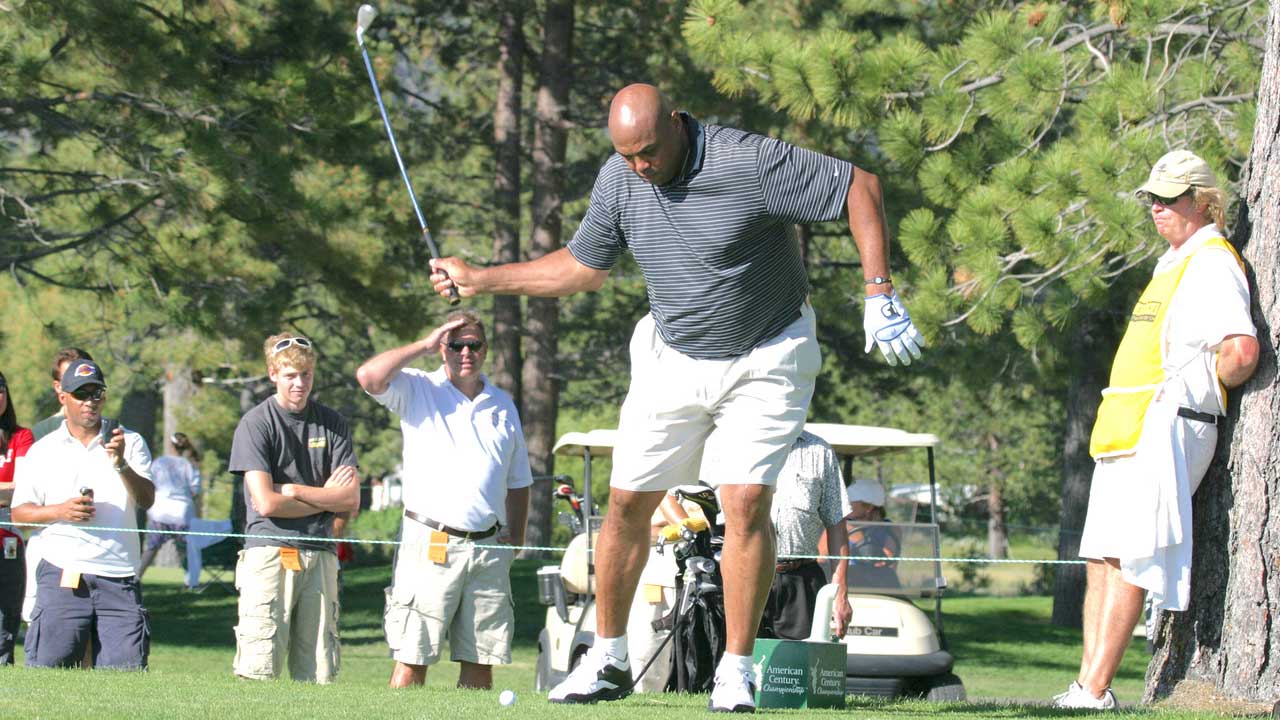

“Charles is very kind to say that,” says Utley, adding that the “work” the two have done has involved little more than him watching Barkley hit balls a couple of times.
Barkley’s problem, Utley says, boiled down to a misunderstanding of lag, a lost-in-translation lesson that led to Barkley “loading the club and then never unloading it,” which in turn forced him to dip in order to reach the ball. That move became a pattern, ingrained over decades.
To break the habit, Utley says he told Barkley to “feel like his wrists were throwing the club head backward to start the downswing. That helped unload the up and down lever and let the club get back to full length. As soon as he did that, he didn’t dip, and he just smashed it.”
Others in Barkley’s circle have seen him do the same.
The week before last, Jim Murphy played a practice round with Barkley at Stone Canyon and says that Sir Charles was back — or at least closer — to his early 1990s self, splitting the fairway with his opening drive and recording a routine par en route to a solid round.
“He was looking as good as I’ve seen him in a long time,” Murphy says.
Nowadays, if there’s a voice rattling in Barkley’s head, it might just be razzing from Roy Green. After all these years, the two men still peg it often, and still give each other guff.
“I have a nickname for him and it’s not the Round Mound of Rebound,” Green says. “I call him Penny, because he’s two-faced and he’s worthless.”
Barkley, for his part, never fails to fire back.
“People might say they feel sorry for Chuck with all his swing problems, or maybe they think he’s hurt by all the ribbing he gets,” Green says. “But I’ll tell you what — if he seems hurt, that’s only because he didn’t get in the last word.”
At Friday’s mic’d-up Match, Barkley will have a chance to talk and talk.
The only question is if he can back it up.




